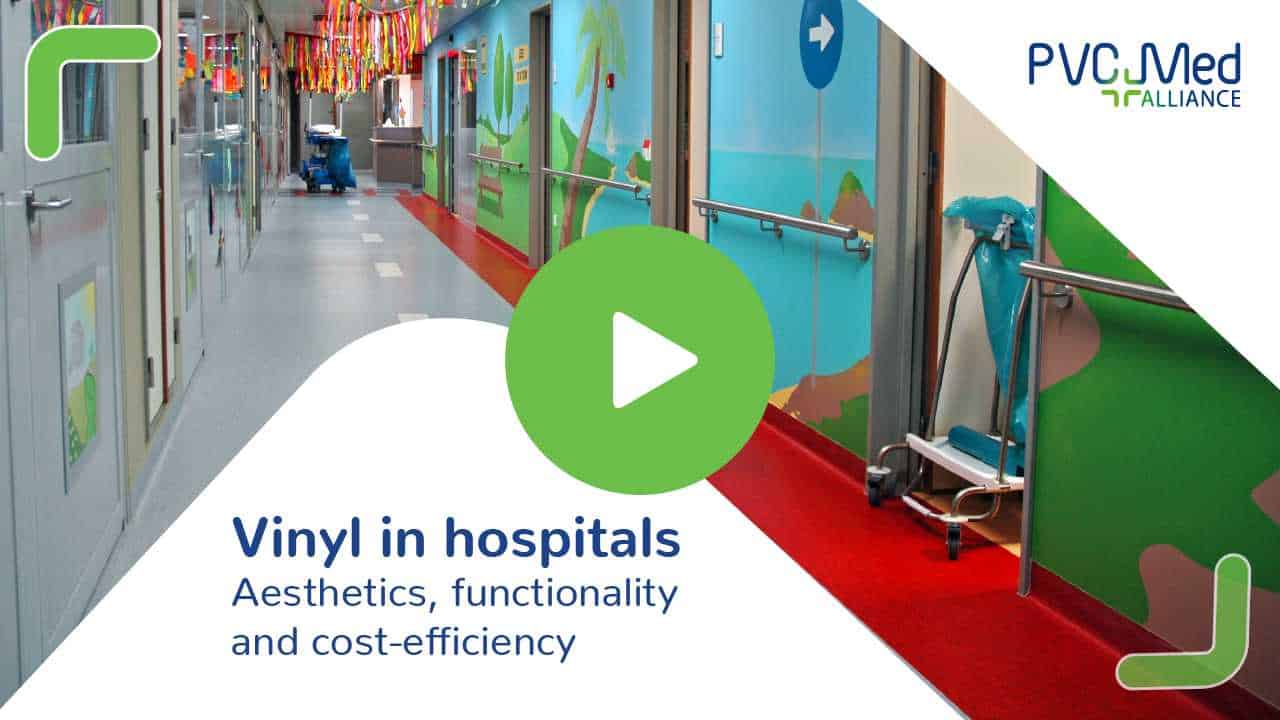Medical facilities need building materials with excellent durability, chemical resistance, low maintenance costs and affordability. The plastic material PVC, also known as vinyl, meets these demands and more. In flooring, ceiling and wall coverings, PVC reduces the need for cleaning and prevents the spread of infection with its smooth hygienic surface. Not only does it last for up to 20 years with intensive use, but PVC also offers the best value for money. With endless design options, including signage, zone boundaries and even art, PVC makes hospitals more comfortable, energising and welcoming for all. As a result, hospital vinyl flooring and other PVC hospital interiors are popular throughout the world.
Watch the video or download the booklet to learn more about the many ways in which hospital vinyl flooring and other types of PVC covering help to create healing architecture.
Why choose vinyl for hospital flooring?
PVC or vinyl flooring is found in hospitals worldwide. This is due to a unique combination of properties that make vinyl an ideal material for healthcare facilities:
Hygienic
The smooth, tough surface of the upper wear layer of hospital vinyl flooring prevents dust and dirt from building up and stops microbes from breeding, thereby playing a crucial role in preventing infections. Vinyl flooring is easy to keep clean with environmentally friendly detergents.
High durability
The robust, hygienic surface of vinyl flooring reduces the need for cleaning and the use of polish. Lasting for up to 20 years or more of intensive use, PVC flooring is thus a natural choice in hospitals and clinics where durability and low maintenance are vital.
In wet rooms and laboratories, PVC flooring is unsurpassed. This is due to the plastic's resistance to water and chemicals.
Safe and shock-absorbent
PVC flooring for hospitals are safe, shock-absorbent, and comfortable to walk on. Vinyl floors thus improve the work environment for healthcare staff and increases patient safety.
Low total cost of ownership
Low installation cost, high durability and ease of cleaning make vinyl flooring a very cost-effective choice, which is crucial in a time with rising pressure on healthcare budgets.
A lifecycle cost analysis at the Västra Nylands Hospital, which is equipped with a high-quality vinyl, found that the Finnish hospital was saving €65,000 a year on cleaning. Total savings add up to €1.6 million on cleaning alone on a 24-year lifecycle basis. Over the same period, the hospital will save 58,320 litres of water, 17,136 litres of chemicals and 16,944 kWh of electricity.
A more welcoming hospital
It is possible to integrate signage, zone boundaries and even art into vinyl flooring. This makes the hospital more welcoming and accessible for patients, visitors and staff.
PVC wall covering
PVC wall covering is a favourite in many hospitals thanks to its aesthetic, hygienic and cost-effective qualities. Vinyl wall covering is attractive — available in grades of thickness, suited to heavy traffic — and will stand up to many years of heavy use.
It is possible to recycle used PVC medical devices into wall covering. This is for instance done through the VinylPlus® Med project in Belgium.
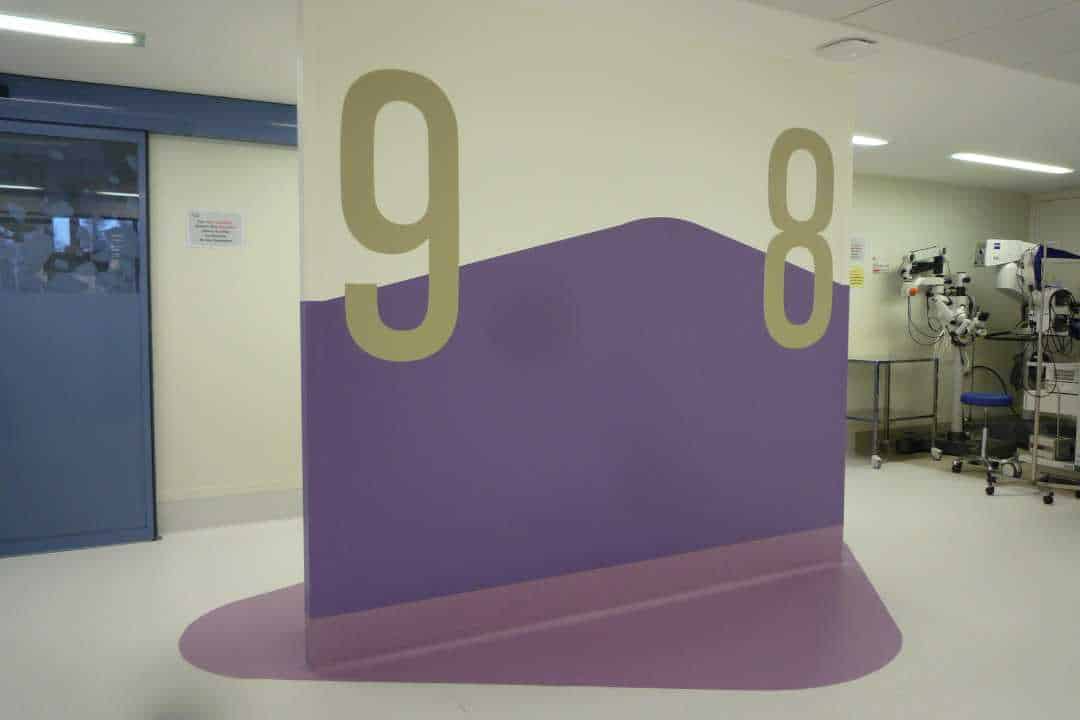
PVC ceiling covering
PVC interiors also include hospital stretch ceilings. Vinyl stretch ceilings provide good acoustics, especially when combined with vinyl flooring. They are colourful, easy to install and have the same flame-retardant properties as PVC flooring and wall covering.
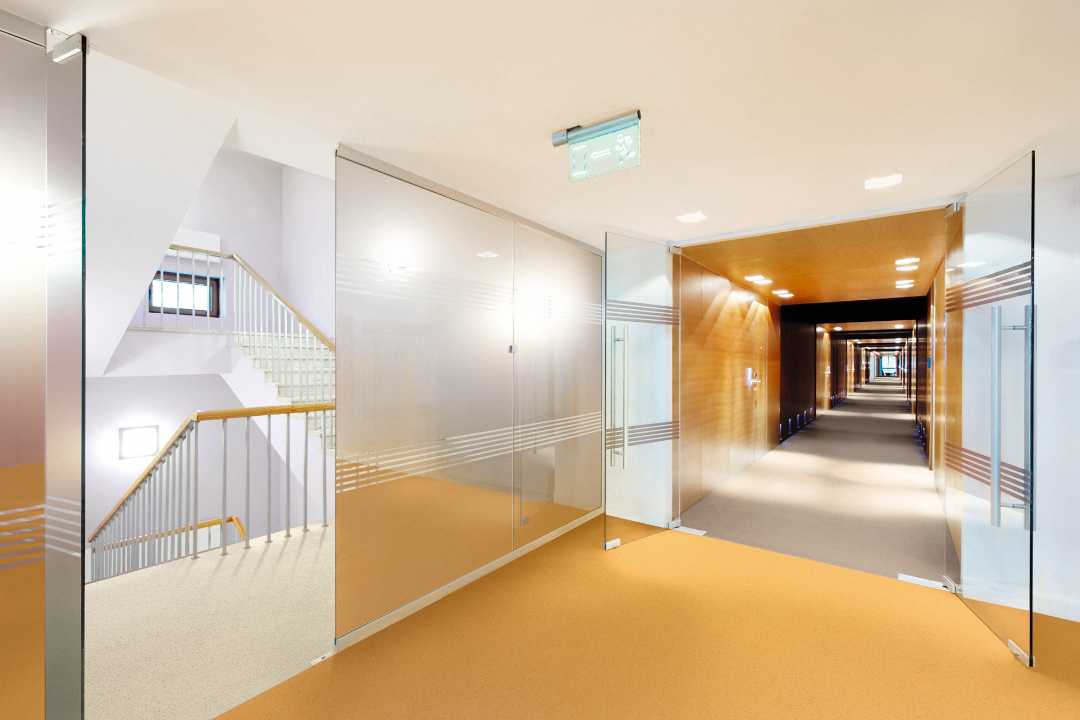
Other examples of PVC applications in hospitals
PVC is not only used in hospital interiors. The plastic is found throughout hospitals, for instance:
Energy-saving PVC windows
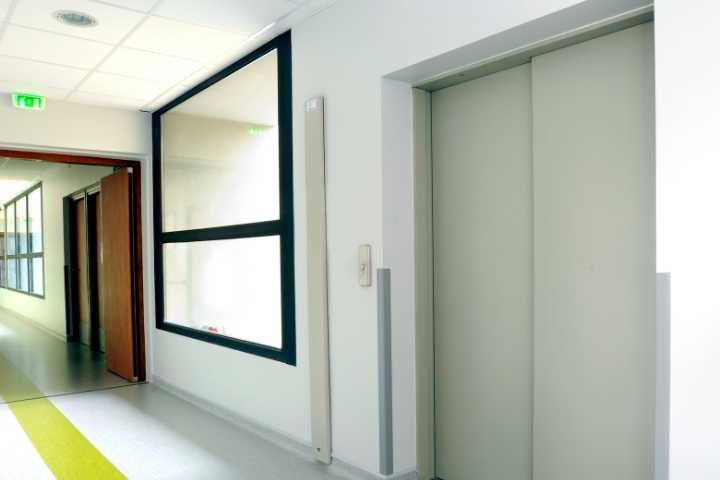
PVC water and drainage pipes
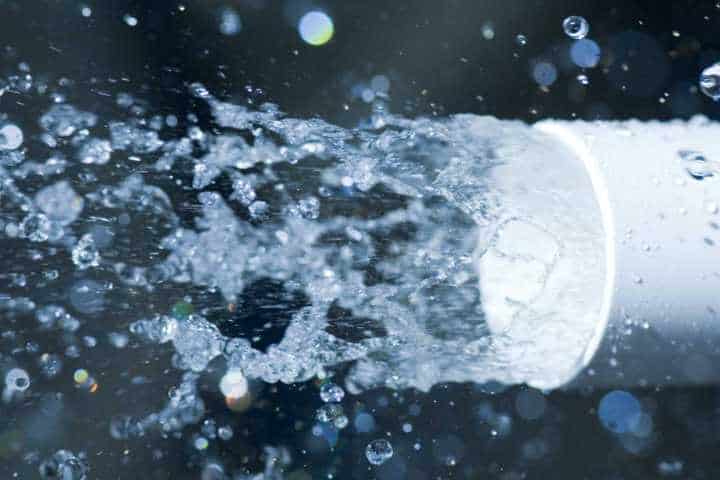
Fire-resistant PVC cables and wires
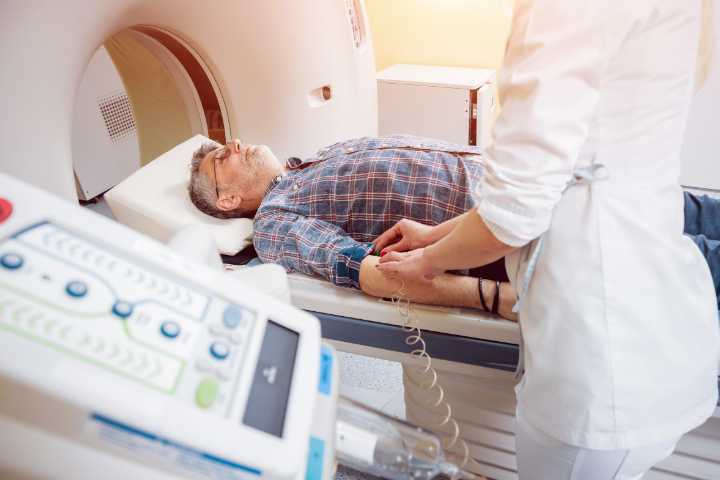
PVC coated mattress covers


